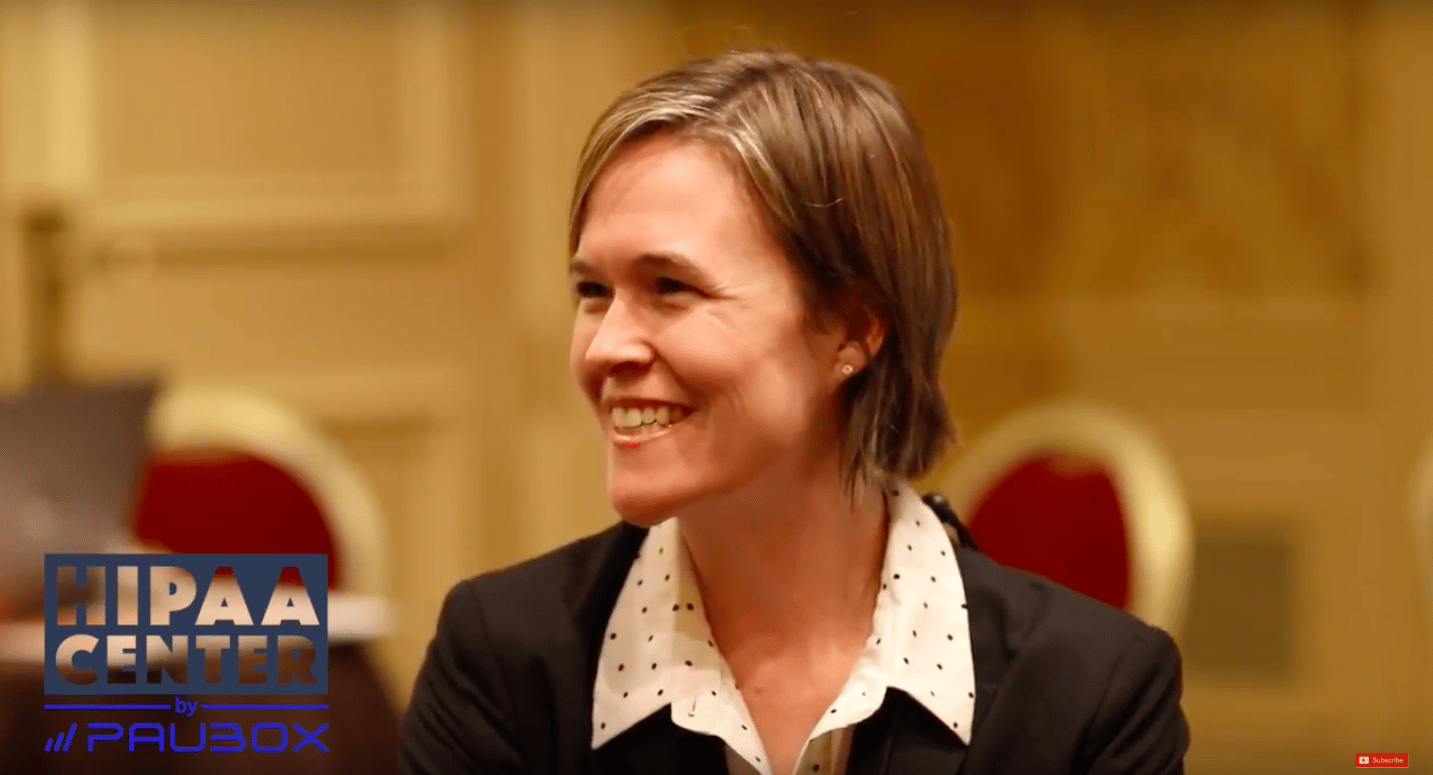9 min read
How the CMS Nursing Home Staffing Mandate impacts long-term care
Gugu Ntsele April 24, 2025

In a court decision, U.S. District Judge Matthew J. Kacsmaryk of the Northern District of Texas struck down the Centers for Medicare & Medicaid Services (CMS) nursing home staffing mandate on April 7, 2025. This ruling blocks a federal rule that would have required nursing homes across the country to maintain specific minimum staffing levels, including 24/7 registered nurse coverage.
The decision represents a victory for nursing home operators and industry groups who had argued that the mandate was impractical and failed to account for the realities of an ongoing healthcare workforce shortage.
What was the CMS Nursing Home Staffing Mandate?
According to the CMS fact sheet, Medicare and Medicaid Programs: Minimum Staffing Standards for Long-Term Care Facilities and Medicaid Institutional Payment Transparency Reporting Final Rule, “On April 22, 2024, the Centers for Medicare & Medicaid Services (CMS) affirmed its commitment to hold nursing homes accountable for providing safe and high-quality care for the nearly 1.2 million residents living in Medicare- and Medicaid-certified long-term care facilities by issuing the Minimum Staffing Standards for Long-Term Care (LTC) Facilities and Medicaid Institutional Payment Transparency Reporting final rule.”
The CMS staffing mandate was part of a broader federal initiative to improve the quality of care in nursing homes. At its core, the rule contained two primary requirements:
- 24/7 registered nurse (RN) coverage: “CMS is finalizing, with revisions to its proposal, the requirement for an RN to be onsite 24 hours a day, seven days a week, and available to provide direct resident care."
- Minimum direct care hours: "CMS is finalizing a total nurse staffing standard of 3.48 hours per resident day (HPRD), which must include at least 0.55 HPRD of direct registered nurse (RN) care and 2.45 HPRD of direct nurse aide care."
These requirements represented the first time federal regulations would have explicitly defined minimum staffing levels for nursing homes nationwide. The mandate was designed to address concerns about understaffing in long-term care facilities and its potential impact on resident outcomes and quality of life.
CMS emphasized that "these new minimum nurse staffing standards in this rule set a national and broadly applicable baseline that will significantly reduce the risk of unsafe and low-quality care for residents across all LTC facilities."
Historical context
The long-term care industry has struggled with staffing challenges, including high turnover rates, wage competition from other healthcare sectors, and difficulty recruiting in rural and underserved areas.
Prior to this mandate, federal regulations required nursing homes to have "sufficient nursing staff" with the "appropriate competencies and skills" to provide care to residents—language that many patient advocates argued was too vague to ensure adequate staffing levels. This ambiguity led to inconsistent staffing practices across facilities, and enforcement of these standards was infrequent. For instance, according to the Center for Medicare Advocacy, “In 2010, only 2.89% of nursing facilities nationwide were cited for insufficient staffing, despite evidence suggesting widespread understaffing.”
The COVID-19 pandemic brought renewed attention to nursing home staffing issues. High mortality rates in long-term care facilities during the early stages of the pandemic showed vulnerabilities in the system, including concerns about infection control practices and the capacity of understaffed facilities to respond to crisis situations.
For instance, a report by the U.S. Department of Health and Human Services' Office of Inspector General found that more than 1,300 nursing homes had infection rates of 75% or more among their Medicare beneficiaries during COVID-19 surges in 2020, with average mortality rates approaching 20% in these facilities.
In response to these concerns and following campaign promises to reform the nursing home industry, the federal government began developing more specific staffing requirements. After an extensive process of research and public comment, CMS finalized the staffing mandate that the federal court has now struck down.
The rationale behind the mandate
CMS cited several factors in justifying the staffing mandate, backed by research on nursing home care quality and staffing disparities:
Research on care quality and disparities
Multiple studies have demonstrated that higher staffing levels, particularly RN staffing, correlate with better resident outcomes and fewer adverse events. According to the NIH research article, Nurse Staffing Hours At Nursing Homes With High Concentrations of Minority Residents, "Higher levels of RN staffing are associated with fewer deficiency citations and reduced severity of cited deficiencies, as well as with improved resident outcomes such as reduced rates of pressure ulcers, urinary tract infections, and mortality."
Studies have also consistently documented racial and ethnic disparities in nursing home care quality across multiple chronic conditions. This research article revealed that "facilities serving high concentrations of racial/ethnic minority residents tend to have lower nurse staffing levels than other facilities." These staffing disparities have persisted over time, with data showing that nursing homes serving predominantly minority populations maintain "persistently lower RN staffing levels" compared to facilities with low minority concentrations.
Addressing structural inequities
The mandate aimed to establish baseline standards that would benefit all nursing homes but potentially have a greater positive impact on facilities serving vulnerable populations. Data indicates that facilities serving predominantly low-income and minority populations often have lower staffing levels. As the research article notes, "Racial/ethnic minority residents tend to be cared for in facilities with limited financial and clinical resources and high numbers of care deficiencies." The staffing mandate was partly intended to address these structural disparities.
Consistency in care standards
By establishing federal minimums, CMS aimed to create a baseline standard of care that residents could expect regardless of which facility they entered or where it was located. The mandate would replace the previous, more vague requirement for "sufficient nursing staff" with specific thresholds intended to ensure adequate care across all facilities.
Responding to pandemic lessons
The COVID-19 pandemic exposed how quickly understaffed facilities could become overwhelmed during a crisis. Nursing homes experienced high mortality rates during the early stages of the pandemic, highlighting vulnerabilities in the system, including concerns about infection control practices and the capacity of understaffed facilities to respond effectively in crisis situations.
Financial incentives and their effects
The CMS mandate recognized that payment policies influence staffing decisions. The research article found that "increases in state Medicaid payment rates to nursing homes were associated with improvements in staffing and reduced staffing disparities across facilities." In contrast, case-mix payment systems were associated with reduced RN hours and potentially increased disparities in staffing.
The specific staffing thresholds in the mandate were based on CMS-commissioned research, including time-motion studies that attempted to quantify the minimum staff time needed to complete essential care tasks. As the CMS fact sheet noted, "CMS' new minimum nurse staffing standards in this rule set a national and broadly applicable baseline that will significantly reduce the risk of unsafe and low-quality care for residents across all LTC facilities."
Implementation timeline and exceptions
According to the CMS factsheet, CMS had established a phased approach: "CMS is implementing the minimum nurse staffing requirements to occur in three phases over a three-year period for all non-rural facilities."
The rule also acknowledged the unique challenges faced by rural providers: "We are finalizing a later implementation date for rural facilities... facilities located in rural areas [must meet] the 0.55 RN and 2.45 NA HPRD requirements [within] five years of the final rule publication."
Additionally, CMS included provisions for hardship cases: "LTC facilities may qualify for a temporary hardship exemption from the minimum nurse staffing HPRD standards and the 24/7 RN requirement only if they meet the following criteria for geographic staffing unavailability, financial commitment to staffing, and good faith efforts to hire."
The legal challenge
The American Health Care Association (AHCA), joined by the Texas Health Care Association (THCA) and several Texas long-term care facilities challenged the Minimum Staffing Standards for Long-Term Care Facilities final rule that CMS had issued on May 10.
According to the AHCA press release, the legal challenge centered on several arguments:
- Statutory authority: The plaintiffs argued that CMS exceeded its statutory authority by imposing blanket staffing requirements. They pointed out that Congress had already prescribed specific staffing requirements for nursing homes participating in Medicare and/or Medicaid, namely:
- Nursing homes "must provide 24-hour licensed nursing service which is sufficient to meet nursing needs of its residents."
- Nursing homes "must use the services of a registered professional nurse at least 8 consecutive hours a day, 7 days a week."
The lawsuit contended that CMS overrode these statutory requirements by imposing a "one-size-fits-all quantitative standard rather than the qualitative and context-sensitive standard that Congress adopted."
- Administrative Procedure Act violations: The plaintiffs claimed that the rule was "arbitrary and capricious" in violation of the Administrative Procedure Act. They argued it was unreasonable to "impose a blanket 24/7 RN requirement and rigid staffing ratios on thousands and thousands of nursing homes across the country, regardless of each particular facility's local conditions and unique circumstances."
- Economic impact: The financial burden the mandate would place on facilities. According to CMS's own estimate, the mandate would cost facilities more than $5 billion each year, while AHCA's analysis suggested the cost would be closer to $6.5 billion annually.
- Practical implementation concerns: The plaintiffs emphasized the practical challenges of implementation given the well-documented nursing shortages across the country, particularly in rural and underserved areas.
- Major policy decision: The lawsuit contended that the establishment of nationwide minimum-staffing standards represented a major policy decision with "massive economic and political significance" that should perhaps come from Congress rather than through agency rulemaking.
AHCA President and CEO Mark Parkinson stated: "We had hoped it would not come to this; we repeatedly sought to work with the Administration on more productive ways to boost the nursing home workforce. Unfortunately, federal officials rushed this flawed policy through, ignoring the credible concerns of stakeholders and showing little regard for the negative impact it will have on our nursing home residents, staff, and the larger health care system."
The court's decision
In his ruling, Judge Kacsmaryk focused on the statutory requirement that staffing regulations be tailored to each facility's specific care needs. He characterized the CMS rule as a "blanket mandate" that failed to meet this requirement, writing that "Congress mandated consideration of a facility's individual nursing needs," and that the agency's approach disregarded this statutory directive.
The judge's opinion emphasized that while improving care quality is a laudable goal, federal agencies must still operate within their legislative authority. By imposing uniform staffing requirements without adequate consideration of facility-specific factors, such as rural location, resident acuity, or local labor market conditions, CMS had overstepped its bounds.
The ruling also touched on the principle of separation of powers, suggesting that such a policy change affecting the entire nursing home industry should perhaps come from Congress rather than through agency rulemaking.
Implications for nursing homes
The immediate effect of this ruling is that nursing homes will not be required to meet the specific staffing thresholds outlined in the CMS mandate. This has several important implications:
1. Operational flexibility
Without mandatory 24/7 RN coverage and specific direct care hour requirements, nursing homes retain greater flexibility in designing staffing patterns that work for their specific circumstances. This is significant for:
- Rural facilities: Many rural nursing homes face recruitment challenges and would have struggled to comply with the RN coverage requirement.
- Smaller facilities: Facilities with fewer beds often operate on thinner margins and may not have been able to absorb the additional staffing costs.
- Specialized care settings: Some specialized care units require different staffing patterns than what the mandate prescribes.
2. Financial impact
The staffing mandate would have represented a financial burden for many facilities. Industry estimates suggested implementation costs in the billions of dollars nationwide, with individual facilities potentially facing hundreds of thousands in additional annual expenses.
Without these mandated increases, facilities can allocate resources based on their own assessment of priorities. However, this also means that facilities operating with minimal staffing may continue to do so, potentially affecting care quality.
3. Continued staffing challenges
It's important to note that the court's decision doesn't eliminate the underlying staffing challenges facing the long-term care industry. A comprehensive qualitative study of 94 skilled nursing facility (SNF) leaders conducted between January 2021 and December 2022 reveals just how extensive these challenges are across the sector.
SNF leaders consistently reported staffing shortages spanning all job roles, not just direct care positions. These shortages affected:
- Direct care staff: Nurses, certified nursing assistants (CNAs), rehabilitation providers, social workers, and activities staff
- Support services: Housekeeping, laundry, food services, and maintenance
- Administrative staff: Front office employees and medical records personnel
- Leadership positions: Directors of Nursing and Administrators
As one leader from a medium-quality SNF noted: "We've had quite a few nurses, aides, housekeepers, dietary people, management, staff, leadership, all around, I don't think there's been one department that hasn't been affected [by shortages]."
4. State-level requirements
While the federal mandate has been struck down, facilities must still comply with state-level staffing requirements, which vary widely. Some states already impose staffing standards that meet or exceed what the CMS mandate would have required. In these states, the court's decision may have limited practical impact.
5. Quality measurement and reporting
Facilities still participate in CMS's Five-Star Quality Rating System, which includes staffing as a key component. Market pressures and public reporting may continue to incentivize higher staffing levels even without regulatory mandates.
What happens next?
Several important questions remain about the future of nursing home staffing policy:
Potential appeal
The federal government has not yet indicated whether it will appeal Judge Kacsmaryk's decision. An appeal would move the case to the U.S. Court of Appeals for the Fifth Circuit, which could uphold or reverse the district court's ruling.
Alternative regulatory approaches
CMS may develop alternative approaches to addressing staffing concerns that could withstand legal scrutiny. This might include:
- More flexible staffing requirements that account for facility-specific factors
- Enhanced financial incentives for higher staffing through payment models
- Targeted interventions focused on facilities with documented quality problems
Congressional action
Congress could potentially act to clarify or expand CMS's authority regarding staffing requirements, though the current political climate makes legislative action uncertain.
State-level responses
Some states may respond to the federal ruling by strengthening their own staffing requirements, potentially creating even greater variation in standards across the country.
FAQs
What is the CMS?
The Centers for Medicare & Medicaid Services (CMS) is a federal agency that oversees the Medicare and Medicaid programs and sets standards for healthcare providers.
Why did CMS introduce a nursing home staffing mandate?
CMS introduced the mandate to improve resident safety and care quality by requiring minimum staffing levels in nursing homes.
What are HPRD requirements?
HPRD, or Hours Per Resident Day, refers to the amount of direct care time nursing home staff must provide to each resident per day.
What types of facilities were affected by the CMS mandate?
The mandate applied to all Medicare- and Medicaid-certified long-term care facilities nationwide.
Why did some nursing homes oppose the mandate?
Many facilities argued that they lacked the financial resources and available workforce to meet the mandated staffing levels.
Subscribe to Paubox Weekly
Every Friday we'll bring you the most important news from Paubox. Our aim is to make you smarter, faster.




